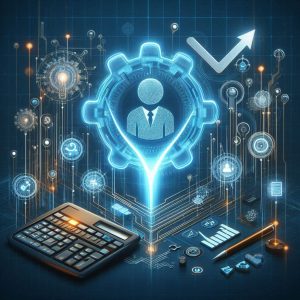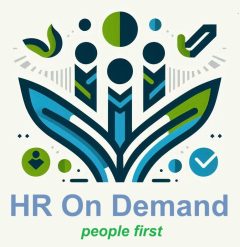Technology in HR: Empowering People Through Innovation
Technology is transforming the HR landscape, enabling businesses to streamline operations, enhance employee engagement, and make data-driven decisions. For small and medium-sized businesses, adopting the right HR technologies can level the playing field, empowering them to compete with larger companies. Below, we explore the key applications of technology in HR, the challenges it presents, and how to harness its potential effectively.

1. The Role of Technology in Modern HR
HR technology encompasses tools and systems that automate and improve HR functions, from recruitment to employee management.
Key Applications of HR Technology:
- Recruitment: Leveraging applicant tracking systems (ATS) to streamline hiring.
- Employee Management: Utilizing HRIS (Human Resource Information Systems) for centralized data.
- Learning and Development: Delivering training programs through e-learning platforms.
- Analytics and Reporting: Using data to inform decisions on productivity, retention, and engagement.
2. Common Challenges in HR Technology Implementation
Adopting HR technology is not without its hurdles, especially for smaller businesses with limited budgets or technical expertise.
| Challenge |
Impact on Organizations |
| High Initial Costs |
Smaller businesses may struggle with upfront expenses. |
| Technology Integration Issues |
Difficulty connecting new tools with existing systems. |
| Data Security Concerns |
Increased risk of breaches with centralized digital data. |
| Resistance to Change |
Employees and managers may be slow to adopt new systems. |
Solutions:
- Start with scalable, cost-effective solutions that meet immediate needs.
- Prioritize tools that offer seamless integration with current processes.
- Conduct thorough training to ease the transition for employees.
3. Tools to Streamline HR Functions
The right tools can significantly enhance HR operations by saving time, reducing errors, and increasing employee satisfaction.
Essential HR Tech Categories: | Type of Tool | Examples | Benefits | |——————————-|————————————-|————————————-| | HR Management Systems (HRIS) | BambooHR, Zoho People | Centralized employee data management. | | Payroll Software | Gusto, Paychex | Automates payroll and tax calculations. | | Learning Management Systems | Udemy for Business, SAP Litmos | Simplifies training and employee development. | | Employee Engagement Tools | SurveyMonkey, Officevibe | Collects feedback and tracks engagement. |
4. Enhancing Employee Experience with Technology
HR technology isn’t just about efficiency; it’s also about improving the employee experience and fostering engagement.
Ways Technology Supports Employees:
- Self-Service Portals:
- Allow employees to access pay stubs, benefits information, and vacation requests.
- Reduces administrative workload for HR staff.
- Wellness and Productivity Apps:
- Tools like Calm and Headspace promote mental health and work-life balance.
- Project management software like Trello or Asana enhances team collaboration.
- Virtual Onboarding:
- Streamlines the onboarding process for remote employees.
- Provides interactive modules to acclimate new hires quickly.
5. HR Analytics: Turning Data into Insights
One of the most powerful applications of HR technology is the ability to collect and analyze data, providing actionable insights.
| Metric |
How It’s Used |
| Employee Turnover Rates |
Identify trends and address causes of high turnover. |
| Time-to-Hire |
Measure recruitment efficiency. |
| Employee Engagement Scores |
Gauge morale and identify areas for improvement. |
HR teams can use these insights to make informed decisions and optimize workforce management.
6. The Future of HR Technology
HR technology is evolving rapidly, offering exciting possibilities for businesses ready to innovate.
Emerging Trends:
- AI and Machine Learning: Automating repetitive tasks like resume screening or FAQ responses.
- Blockchain for HR: Enhancing security in employee record management.
- Virtual Reality (VR): Providing immersive training experiences.
- Predictive Analytics: Anticipating workforce needs and trends before they arise.


